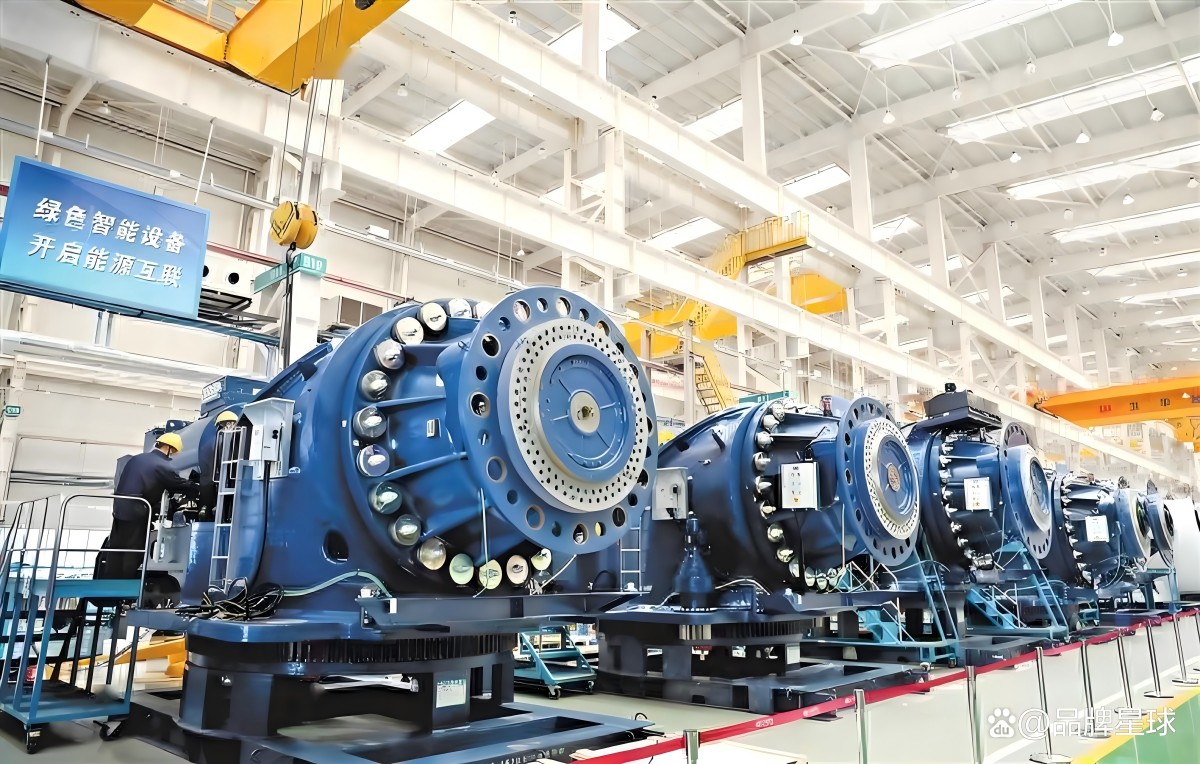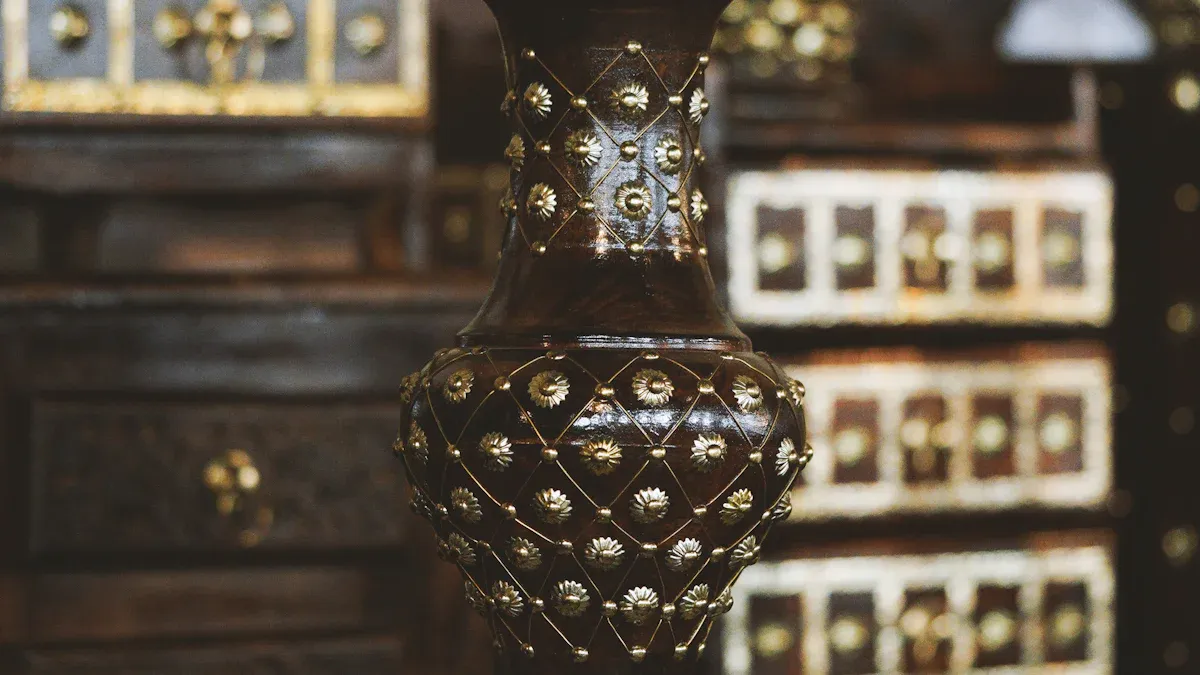
Precision matters in electric power components. Tin bronze precision castings for electric power components are renowned for their strength and reliability. When compared to other materials like aluminum bronze or brass, they provide unique advantages. Industries depend on bronze fabrication services to fulfill demanding requirements, while electrical copper castings continue to be a trusted choice for conductivity and durability. Tin bronze precision castings, electric power components are essential for ensuring optimal performance in various applications.
Overview of Tin Bronze and Other Alloys
Tin Bronze: Composition and Properties
Tin bronze stands out for its excellent mechanical qualities and corrosion resistance. It primarily consists of copper and tin, with a typical composition of 89% copper and 11% tin. This alloy is widely used in applications like pump bodies, gears, and bushings due to its durability and ability to handle high loads. Tin bronze precision castings for electric power components are especially valued for their ability to operate at temperatures up to 500°F and withstand loads of up to 4,000 lbs per square inch. These properties make it a reliable choice for demanding environments.
| Property | Description |
|---|---|
| Mechanical Qualities | Good mechanical qualities suitable for precision castings. |
| Corrosion Resistance | Resistant to corrosion, enhancing durability in various environments. |
| High-Temperature Operation | Can operate at temperatures up to 500 °F, suitable for demanding applications. |
| Load Capacity | Capable of handling loads of 4,000 lbs per square inch, ensuring reliability. |
Aluminum Bronze: Composition and Properties
Aluminum bronze combines copper with aluminum, offering unique advantages over tin bronze. It boasts higher mechanical strength, ranging from 550 to 900 MPa, and excellent corrosion resistance due to the formation of an aluminum oxide layer. This alloy also excels in wear resistance and performs well under high temperatures. However, it lacks the non-sparking properties of tin bronze, which limits its use in certain applications.
| Property | Aluminum Bronze | Tin Bronze |
|---|---|---|
| Mechanical Strength | 550 to 900 MPa | Lower than aluminum bronze |
| Corrosion Resistance | Excellent due to aluminum oxide layer | Moderate |
| Wear Resistance | High hardness and abrasion resistance | Lower than aluminum bronze |
| Thermal and Oxidation Resistance | Reliable under high temperatures | Less effective |
| Non-Sparking Properties | Yes | No |
Brass and Copper: Composition and Properties
Brass and copper differ significantly from tin bronze in composition and properties. Brass, made from copper and zinc, is known for its machinability and aesthetic appeal. However, it has lower corrosion resistance compared to tin bronze. Copper, on the other hand, excels in electrical conductivity but offers moderate corrosion resistance. Tin bronze precision castings for electric power components outperform both brass and copper in strength and durability, making them ideal for heavy-duty applications.
- Brass: Primarily copper and zinc, valued for its ease of machining and decorative uses.
- Copper: Known for its superior electrical conductivity but less durable in harsh environments.
- Tin Bronze: Stronger and more corrosion-resistant, suitable for marine and industrial applications.
Key Comparison Factors

Strength and Durability
When it comes to strength and durability, tin bronze stands out. Its composition, primarily copper and tin, gives it excellent wear resistance and the ability to handle high-stress applications. For example, tin bronze is harder than copper, thanks to the addition of tin, which boosts tensile strength and reduces deformation. This makes it ideal for components like bearings and gears that endure constant friction and heavy loads.
| Property | Tin Bronze | Other Alloys |
|---|---|---|
| Strength | Stronger than red and semi-red brasses | Varies by alloy type |
| Wear Resistance | High wear resistance | Varies by alloy type |
| Applications | Bearings, gears, piston rings, valves | Varies by alloy type |
Corrosion Resistance
Tin bronze precision castings for electric power components excel in corrosion resistance. Alloys like C90700, with 89% copper and 11% tin, are particularly effective in harsh environments. This makes them perfect for pump bodies and bearings, where exposure to moisture or chemicals is common. Unlike some other alloys, tin bronze maintains its integrity even in low-speed, heavy-load scenarios, ensuring long-term reliability.
Tip: If your application involves marine or industrial environments, tin bronze is a dependable choice due to its superior corrosion resistance.
Thermal and Electrical Conductivity
While tin bronze offers moderate thermal and electrical conductivity, it doesn’t match the levels of pure copper. For instance, copper has an electrical conductivity of ~58.1 MS/m, whereas tin bronze ranges between 7–15 MS/m. Similarly, its thermal conductivity (24-108 W/mK) is lower than copper but comparable to brass. Despite this, tin bronze remains a practical option for applications requiring a balance of conductivity and durability.
| Property | Brass | Tin Bronze | Copper |
|---|---|---|---|
| Thermal Conductivity | 109-121 W/mK | 24-108 W/mK | 210-400 W/mK |
| Electrical Conductivity | ~15 MS/m | 7–15 MS/m | ~58.1 MS/m |
Machinability and Casting Precision
Tin bronze is known for its excellent machinability, which allows for precise manufacturing of components like helical gears. Its hardness enhances wear resistance but can make machining slightly more challenging. However, the alloy’s ability to produce smooth, defect-free surfaces ensures high accuracy and consistency. This makes it a preferred material for intricate designs and tight tolerances.
- Advantages:
- Enables precise gear manufacturing.
- Produces smooth, defect-free surfaces.
- Supports complex designs for specific applications.
Cost-Effectiveness
Although tin bronze has higher upfront costs compared to some other alloys, its durability and low maintenance requirements make it cost-effective in the long run. For instance, in marine environments, tin bronze bearings resist corrosion better than copper, reducing replacement frequency. This translates to lower downtime and maintenance costs, making it a smart investment for critical systems.
- Key Benefits:
- Long-term savings due to durability.
- Reduced maintenance and downtime.
- Energy-efficient performance in electric power applications.
Applications of Tin Bronze Precision Castings for Electric Power Components
.jpg)
Bushings and Bearings
Tin bronze is a top choice for bushings and bearings in electric power systems. Its unique properties make it ideal for components that endure constant friction and heavy loads. The alloy resists wear and abrasion, ensuring long-lasting performance even in demanding environments. It also dissipates heat effectively, helping maintain operational temperatures during use. These qualities make tin bronze bushings and bearings reliable for applications like turbines, motors, and industrial machinery.
| Property | Description |
|---|---|
| Corrosion Resistance | Protects against degradation in harsh environments |
| Wear and Abrasion Resistance | Ensures longevity under friction and stress |
| High Load Capacity | Supports heavy loads without failure |
| Heat-Dissipating Characteristics | Aids in maintaining operational temperatures |
Tin bronze is commonly used in bushings, gears, and marine pumps. Its ability to handle high stress and resist environmental damage makes it indispensable for electric power components.
Connectors and Terminals
Connectors and terminals in electric power systems demand materials that combine durability with excellent conductivity. Tin bronze meets these requirements with its superior electrical performance, which minimizes power losses. Its corrosion resistance ensures reliable operation in harsh conditions, including exposure to salt spray and industrial pollutants. Tin bronze connectors are also easy to install and maintain, saving time and labor costs.
- Key Benefits:
- Superior conductivity for efficient power transfer.
- Long-lasting durability reduces replacement frequency.
- Secure connections enhance safety and prevent electrical faults.
These features make tin bronze precision castings for electric power components a cost-effective and dependable choice for connectors and terminals.
Other Precision Components
Tin bronze is also used for other precision components in electric power systems. Its machinability allows for the creation of intricate designs with tight tolerances. This makes it suitable for parts like valve bodies, pump housings, and helical gears. The alloy’s strength and corrosion resistance ensure these components perform reliably under high stress and in challenging environments. Tin bronze precision castings for electric power components offer a balance of durability and precision, making them essential for critical applications.
Decision-Making Guide for Alloy Selection
Assessing Application Requirements
Choosing the right alloy starts with understanding the application’s needs. Each project demands specific mechanical properties like strength, ductility, and hardness. For example, components exposed to heavy loads require alloys with high tensile strength, such as tin bronze. Corrosion resistance is another critical factor, especially for parts used in marine or industrial environments. Electrical and thermal conductivity also play a role, particularly in electric power systems where efficient energy transfer is essential.
Manufacturing considerations, like machinability and weldability, further influence alloy selection. Alloys that are easier to machine or weld, such as aluminum bronze, can simplify production and reduce costs. Additionally, economic factors like material and processing expenses must align with the project’s budget. By evaluating these requirements, engineers can ensure the alloy meets both performance and operational criteria.
Evaluating Environmental Conditions
Environmental factors significantly impact alloy performance. Moisture, chemicals, and temperature fluctuations can degrade materials over time. For instance, tin bronze excels in resisting corrosion, making it ideal for humid or chemically aggressive settings. In contrast, alloys like copper offer superior electrical conductivity, which is crucial for wiring and circuits.
Temperature stability is another consideration. High-temperature environments demand alloys that maintain their properties under heat stress. By matching the alloy’s characteristics to the operating environment, designers can enhance durability and reliability.
Balancing Performance and Budget
Balancing performance and cost is key to successful alloy selection. High-performance alloys often come with a higher price tag due to their composition or specialized processing. For example, alloys containing rare elements may increase material costs. However, investing in durable materials like tin bronze can reduce maintenance and replacement expenses over time.
To strike the right balance, engineers should prioritize essential properties while considering budget constraints. This approach ensures the project remains cost-effective without compromising quality or functionality.
Tin bronze offers long-term benefits for electric power applications. Its corrosion resistance protects against rust and degradation, ensuring consistent performance and reducing maintenance needs. Although its initial cost may be higher, its durability leads to lower overall expenses. For specific conditions, aluminum bronze or brass might be better choices, especially in high-pressure or corrosive environments.
Tip: Tin bronze’s recyclability and energy-efficient recycling processes make it a sustainable option, supporting waste reduction and environmental conservation.
FAQ
What makes tin bronze ideal for electric power components?
Tin bronze offers excellent strength, corrosion resistance, and durability. These properties make it reliable for high-stress applications like bushings, bearings, and connectors.
How does tin bronze compare to aluminum bronze?
Tin bronze provides better corrosion resistance and non-sparking properties. Aluminum bronze, however, offers higher mechanical strength and wear resistance, making it suitable for specific high-pressure applications.
Can tin bronze components handle extreme environments?
Yes, tin bronze performs well in harsh conditions. It resists corrosion, handles heavy loads, and operates effectively at high temperatures, ensuring long-term reliability in demanding environments.
